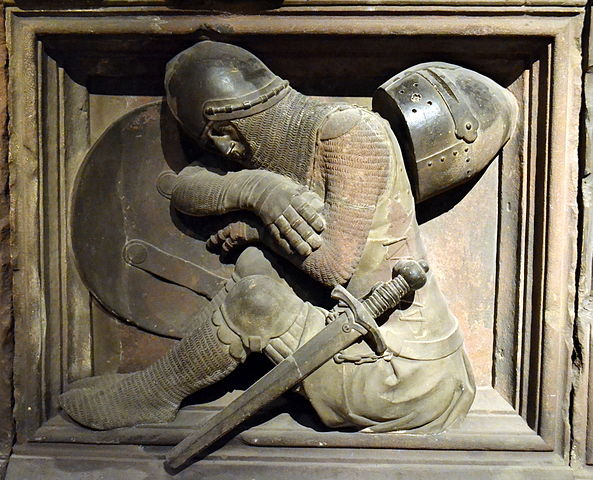- Thread starter
- #61
I can't imagine having gone into battle with a flat-topped helmet; it just seems like it would direct all of the force of an overhead strike to the wearer's chin and collarbone. Ouch. Their only advantage, I think, was that they were quicker and cheaper to make. Even worse would be to have a giant metal sculpture welded to the top; one *whack* to that and your head gets cranked sideways. Double ouch.You prefer one helmet more then the others ?Merci! My undergraduate is in Medieval Europe so I am drawn to photos like this like a moth to flame. I particularly enjoyed your breakdown of helmets earlier.Welcome the new one to USMB, Do not hesitate to add your contribution to my trhead ^^Not to mention schlepping it all on foot from Paris to Jerusalem. And, hopefully, back.To wear one of these heavy suits of armor and carry a broadsword, you had to be in very good physical condition. And to then fight in battle wearing all this. That is no small feet of conditioning, they had to be in incredible physical shape to do these things.
In my reenactment and swordfighting days, I wore a version of a spangenhelm with a face guard - it wasn't totally historically accurate but I had taken enough hits to the nose and eye socket that it was worth it, and it still allowed me to see (mostly) and hear. I feel sorry for the crusaders and soldiers who wore barbutes, bascinets, or sallets; the ones I wore always felt like I was wearing a soup pot, or a diving helmet, making it hard to hear orders and other combatants. Really I think I would have most preferred a simple mail coif; my ancestor William Marshal is often depicted (including in his effigy) just wearing a coif, although I imagine when it became Showtime! he would at least put on a simple round cereal bowl, again for deflection's sake.
Aesthetically, I do like the later armets and great bascinets, especially the ones with the rounded skulls. They're such beauties of engineering.
As for the shape of helmets let's say that it is the change of fashion evolution over time.
Those who have a finery on the helmet is more to scare the enemy




